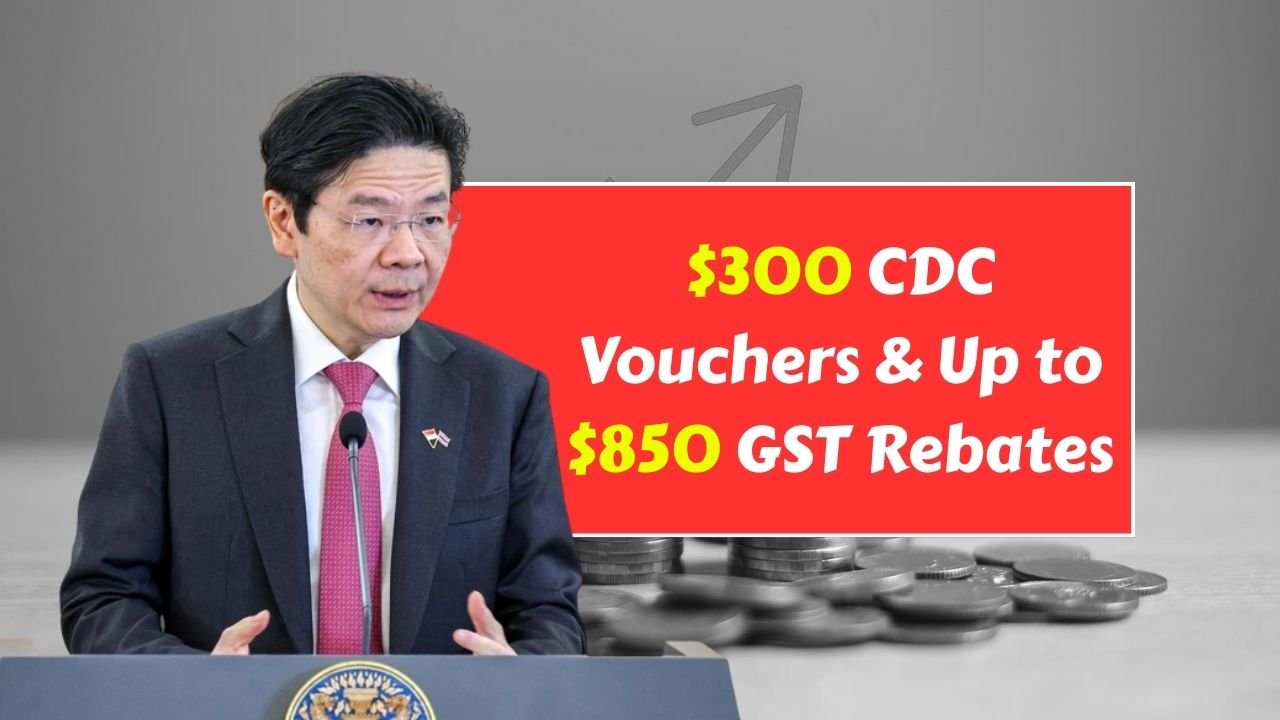Join on WhatsApp
Get the latest updates directly on WhatsApp – motivation, news & more!
Singapore has continued to strengthen its social safety nets in 2025, providing direct support to households as the cost of living rises. Two major highlights this year are the distribution of Community Development Council (CDC) vouchers and enhancements to the Goods and Services Tax (GST) Voucher scheme. Together, these measures aim to ease the financial burden faced by families and seniors, ensuring that help is both broad-based and targeted where it is most needed.
The government has positioned these payouts not only as short-term relief but also as part of a long-term commitment to maintain fairness and inclusivity in Singapore’s social policies. Let’s explore what these schemes mean, how much households can expect to receive, and why they matter for Singaporeans today.
The Role of CDC Vouchers
The CDC Vouchers scheme has become a familiar form of support for households across Singapore. Introduced during the pandemic, it has proven to be a practical way of helping families manage day-to-day expenses while also supporting local businesses.
In 2025, every Singaporean household will receive a fresh round of CDC vouchers worth $300. These vouchers can be used at participating hawkers, heartland shops, and supermarkets. This ensures that the benefits flow back into the community, strengthening small businesses while offering households meaningful relief on essentials such as food and groceries.
For families with tighter budgets, these vouchers provide immediate value since they can directly offset common expenses. Even for middle-income households, the vouchers help ease monthly spending, which can then free up cash for other commitments like education, healthcare, or savings.
GST Vouchers: Comprehensive Relief
While CDC vouchers are given universally, the GST Voucher scheme is more targeted. It was designed to offset the impact of the Goods and Services Tax on lower- and middle-income Singaporeans. In 2025, this scheme continues to expand, offering eligible citizens cash payments, MediSave top-ups, and rebates for utilities and service charges.
The GSTV–Cash component is one of the most direct forms of support. Eligible Singaporeans aged 21 and above can receive up to $850, depending on their income levels and the annual value of their homes. Those living in lower-valued properties and earning modest incomes will receive the highest payouts, while those with higher incomes or more expensive homes will receive smaller amounts.
Additional Support for Seniors
For older Singaporeans, the GSTV–MediSave component offers an important supplement. Seniors aged 65 and above will receive top-ups to their MediSave accounts, helping them manage medical costs and long-term care needs. The amount varies by age and home value, with older seniors typically receiving larger top-ups.
This targeted support reflects the government’s recognition that healthcare remains a growing concern for Singapore’s aging population. By channeling funds directly into MediSave, seniors can be assured that they will have resources to draw upon when medical needs arise, reducing anxiety about future expenses.
Rebates on Utilities and Service Charges
Another important aspect of financial aid in 2025 comes in the form of U-Save rebates and Service and Conservancy Charges (S&CC) rebates. These help households living in HDB flats by lowering monthly utility bills and town council charges.
For many families, utilities and service charges are unavoidable fixed expenses. The rebates therefore act as regular relief, stretching household budgets further. Depending on flat type, households can expect hundreds of dollars in savings over the course of the year. When combined with cash payouts and vouchers, the overall package represents a significant reduction in out-of-pocket costs.
Why These Measures Matter
Singapore’s financial aid measures in 2025 are more than just handouts. They represent a carefully balanced approach that addresses both immediate and structural challenges. On one hand, universal schemes like CDC vouchers promote inclusivity by ensuring every household feels supported. On the other hand, targeted schemes like GST vouchers ensure that the greatest benefits reach those with lower incomes and higher needs.
The strategy also reflects Singapore’s long-standing principle of fiscal prudence. Rather than offering unlimited subsidies, the government focuses on direct and purposeful aid that encourages self-reliance while cushioning the impact of economic pressures.
How to Access the Benefits
Most of these benefits are automatically credited or issued digitally, reducing the need for lengthy applications. For CDC vouchers, households can claim them through Singpass and distribute them digitally among family members. For GST vouchers and MediSave top-ups, eligible citizens will usually be notified directly and receive funds in their designated accounts.
It is important for households to stay updated on release dates, eligibility conditions, and voucher validity. CDC vouchers, for example, come with an expiry date, and unclaimed amounts cannot be refunded. By staying informed, families can make the most of these benefits without missing out.
Long-Term Outlook
As Singapore transitions into an economy with higher costs of living and an aging population, such support schemes are likely to remain a key part of social policy. The combination of broad-based assistance and targeted relief helps maintain social cohesion, ensuring that no group feels left behind.
At the same time, the government continues to emphasize the importance of skills upgrading, employment opportunities, and community support. Financial aid helps households in the short term, but long-term resilience will also depend on sustainable growth and continued social investments.
Conclusion
The financial aid measures rolled out in 2025 highlight Singapore’s commitment to balancing inclusivity with targeted assistance. With $300 in CDC vouchers for every household and up to $850 in GST rebates for eligible individuals, families across the country can expect meaningful relief on daily expenses and long-term needs.
These measures go beyond immediate cash support; they reflect a broader philosophy of supporting households in practical ways while encouraging resilience and shared responsibility. For many Singaporeans, the vouchers, rebates, and top-ups will make a real difference in managing the rising costs of living, reinforcing the social compact that has long been central to Singapore’s development journey.


